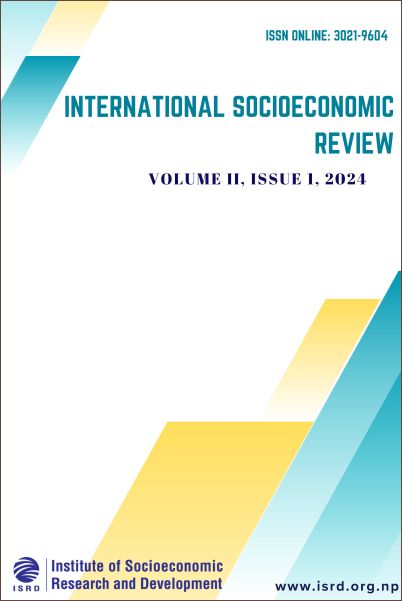Evaluation of Botanical Extracts for their efficacy against In-vitro growth of Sclerotium rolfsii
DOI:
https://doi.org/10.3126/iser.v2i1.75233Keywords:
Botanical extracts, Completely Randomized Design, Growth inhibition, Poisoned food techiqueAbstract
Sclerotium rolfsii is a necrotrophic, soil-borne plant pathogenic fungus associated with economically significant diseases causing mainly collar rot, southern blight, seedling blight, and stem rot on more than 500 plant species including almost all agronomical and horticultural crops. In contrast to chemical fungicides, plant extracts do not cause pollution and are easily biodegradable, therefore the current study focuses on the affordable, environmentally friendly, safe, and sustainable control of diseases through botanical extracts. An experiment was conducted at the Institute of Agriculture and Animal Science, Lamjung Campus, Plant Pathology Laboratory to ascertain the effectiveness of botanical extracts against this pathogen. Under the in-vitro study, five botanical extracts viz. Allium sativum, Zingiber officinale, Datura stramonium, Azadirachta indica, and Allium cepa were evaluated at three different concentrations (5%, 10%, and 15%) using the poisoned food technique in a Completely Randomized Design and each concentration was replicated three times. The purpose of the study was to assess their efficacy against the mycelial growth of S. rolfsii. The data were analyzed using R-software in R-studio and means were compared at a 5% significance level using Duncan’s Multiple Range Test (DMRT). All tested chemicals reduced the pathogen's mycelial development compared to the control. Data on pathogen mycelial growth were collected after 24, 48, and 72 hours of incubation. After 72 hours, among all the tested botanicals, the pathogen’s growth was significantly inhibited by 15% Allium sativum (growth inhibition of 80.9%) followed by 15% Azadirachta indica (74.8%), and by 15% Zingiber officinale (70.1%). Datura stramonium at 5% showed the least growth inhibition (12.1%) which was statistically at par with the effect of Allium cepa at 5% concentration (14.9%). Further research and field trials should be conducted to select appropriate concentrations of botanical extracts to con-trol the disease pathogen economically and sustainably.
Downloads
Downloads
Published
How to Cite
Issue
Section
License
Copyright (c) 2024 International Socioeconomic Review

This work is licensed under a Creative Commons Attribution 4.0 International License.
This license enables reusers to distribute, remix, adapt, and build upon the material in any medium or format, so long as attribution is given to the creator. The license allows for commercial use.




